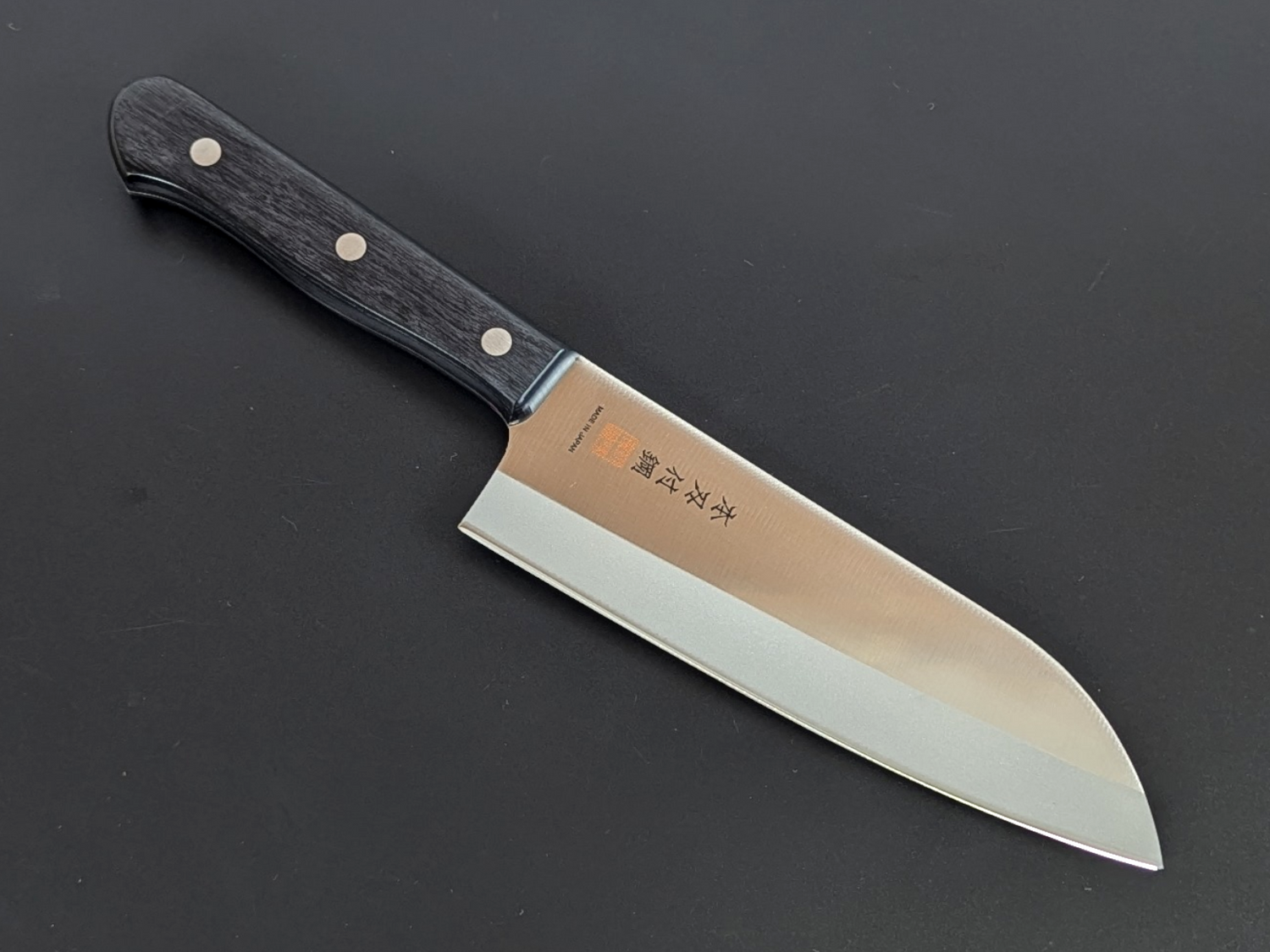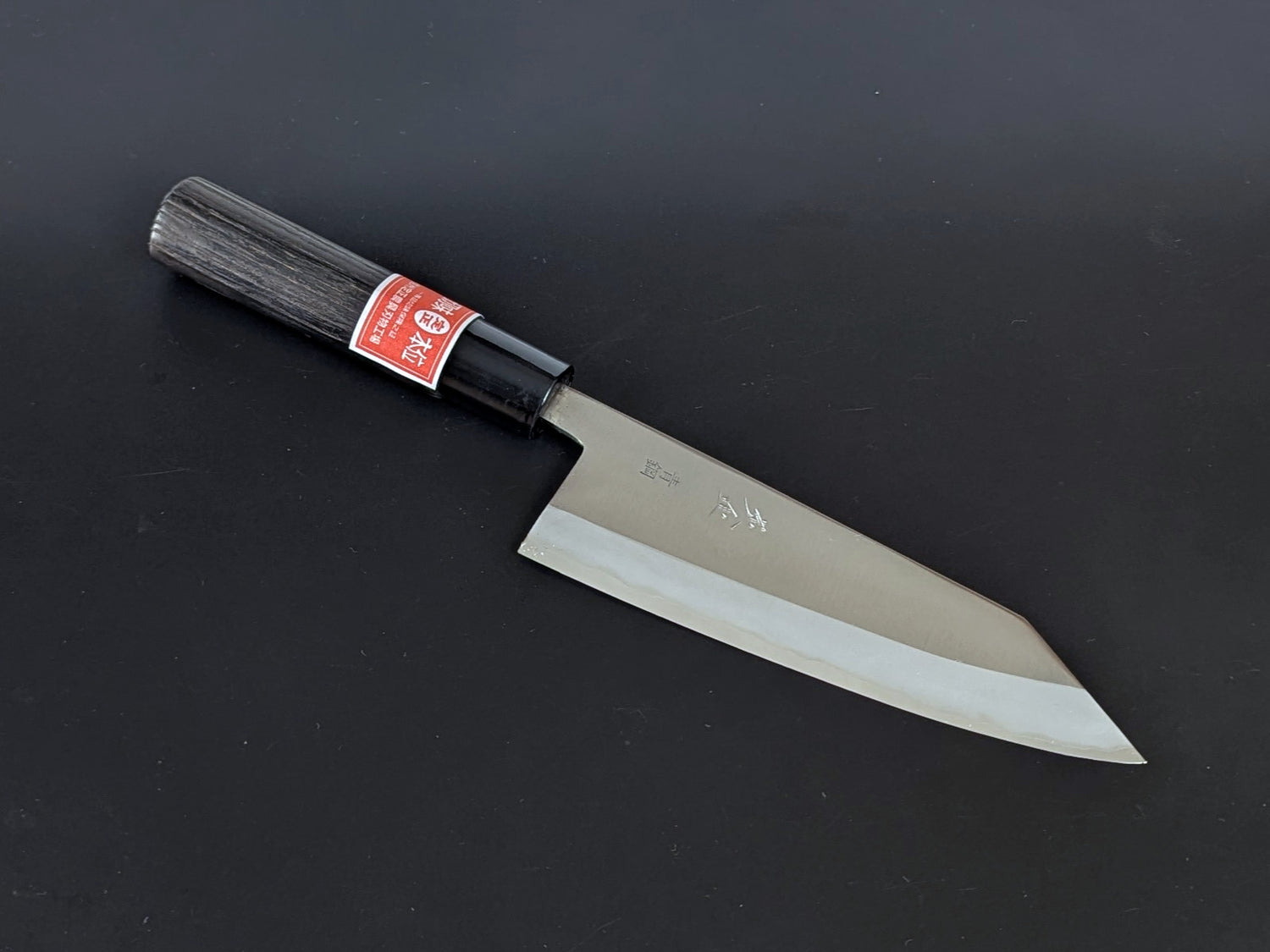-
Santoku japonés Nashiji n.º 3 de acero plateado de Yoshihiro, 165 mm (6,5 pulgadas), mango de nogal
Precio habitual ¥21,780 JPYPrecio habitualPrecio unitario por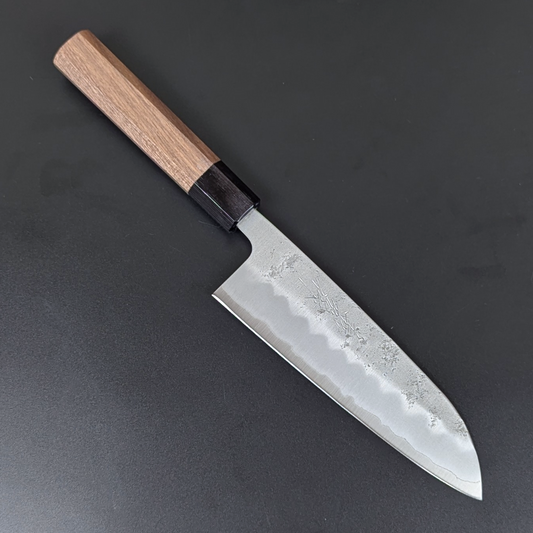
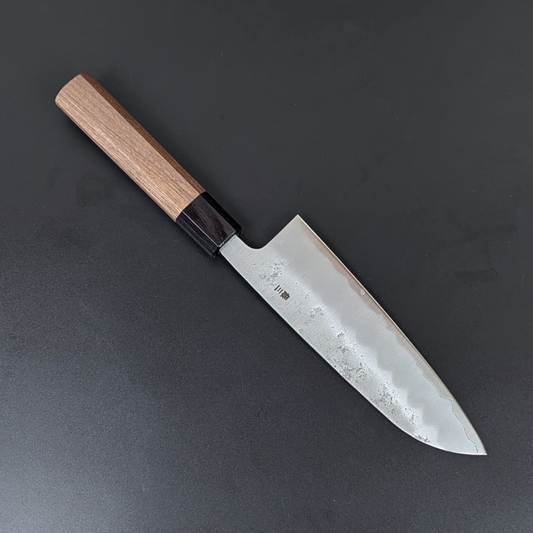
-
Yamatsuka Hamono Ginsan Acero Inoxidable Kasumi Santoku 180mm
Precio habitual ¥25,500 JPYPrecio habitualPrecio unitario por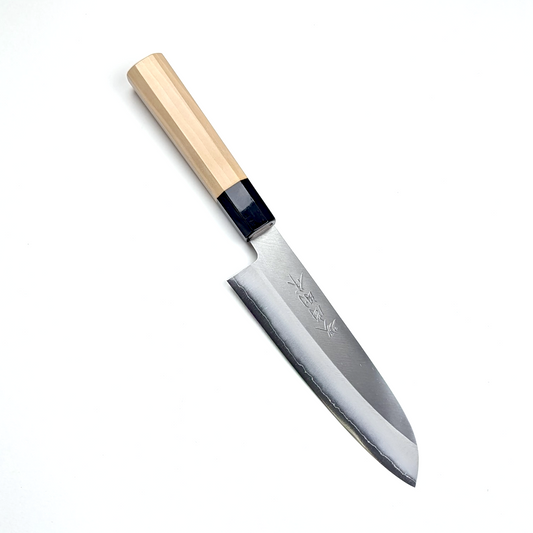
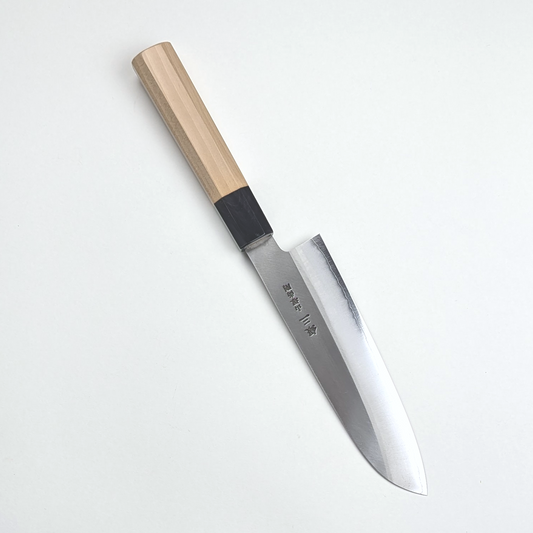
-
Yamatsuka Hamono Ginsan Acero Inoxidable Kasumi Santoku 180mm
Precio habitual ¥29,000 JPYPrecio habitualPrecio unitario por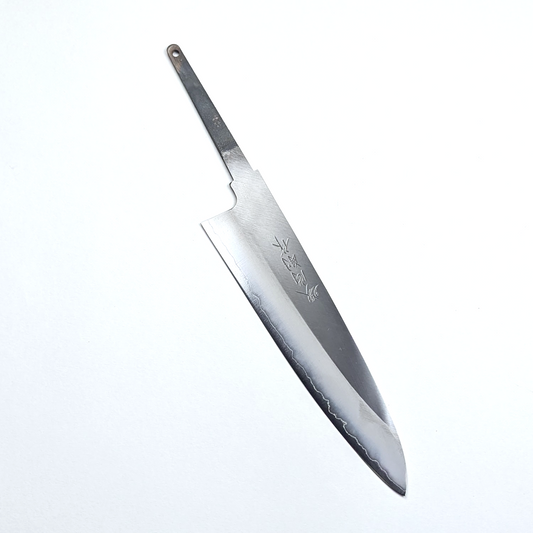
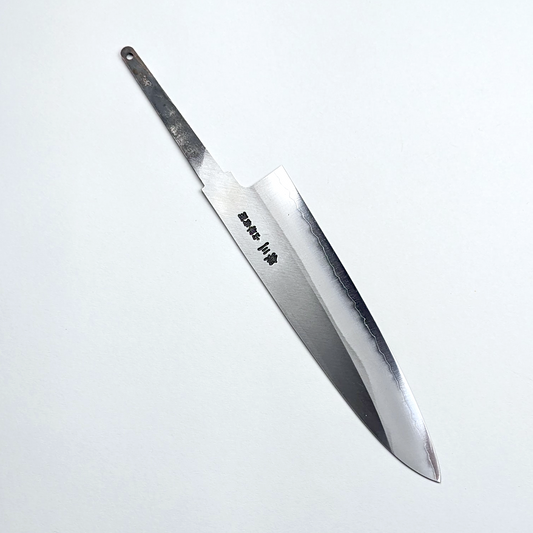 Agotado
Agotado -
Inoguchi Ginsan Kurosome Kiritsuke Santoku 210mm Black&Blue-Lacquered Oak Handle
Precio habitual ¥18,000 JPYPrecio habitualPrecio unitario por¥0 JPYPrecio de venta ¥18,000 JPY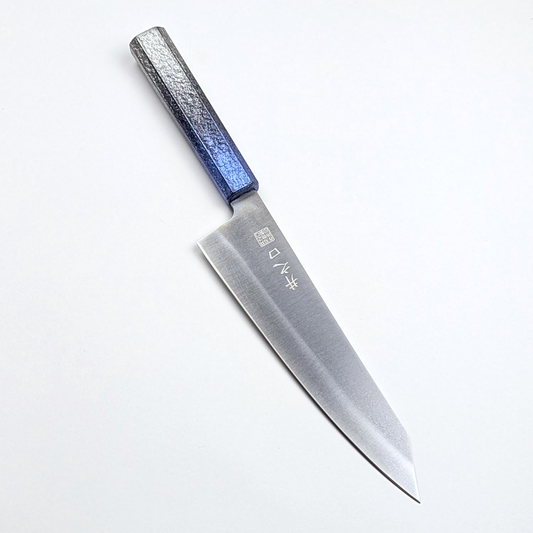
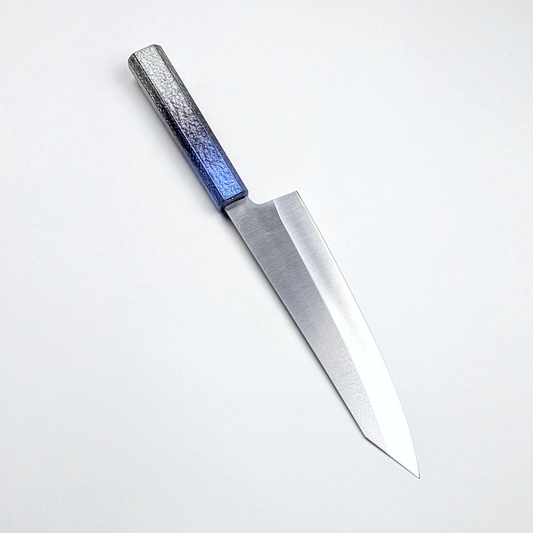 Agotado
Agotado -
Inoguchi Ginsan Kurosome Kiritsuke Santoku 210mm Black-Lacquered Oak Handle
Precio habitual ¥18,000 JPYPrecio habitualPrecio unitario por¥0 JPYPrecio de venta ¥18,000 JPY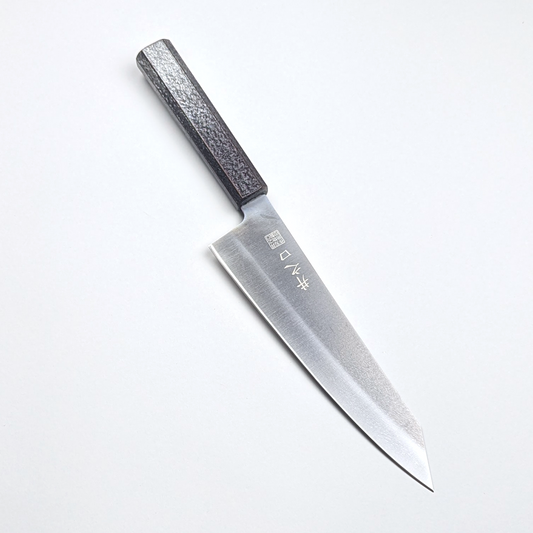
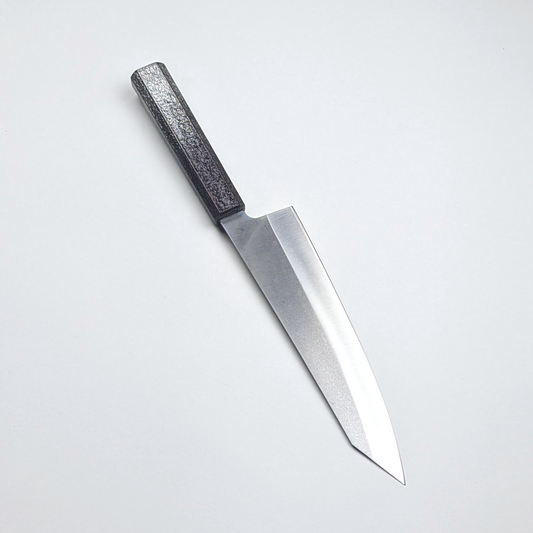 Agotado
Agotado -
Inoguchi Ginsan Kiritsuke Santoku Ebony Handle with Silver Rings
Precio habitual ¥18,000 JPYPrecio habitualPrecio unitario por¥0 JPYPrecio de venta ¥18,000 JPY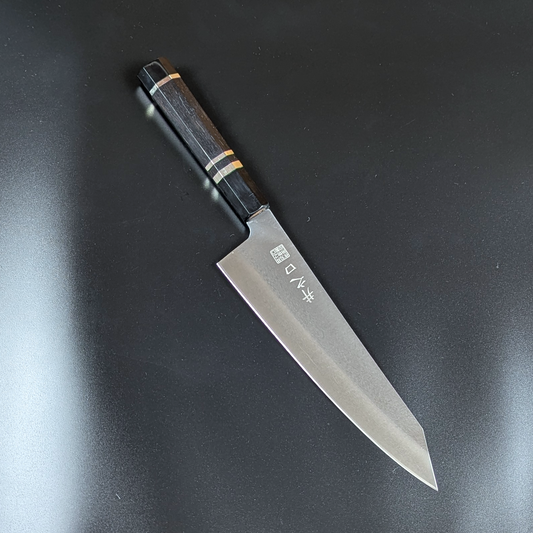
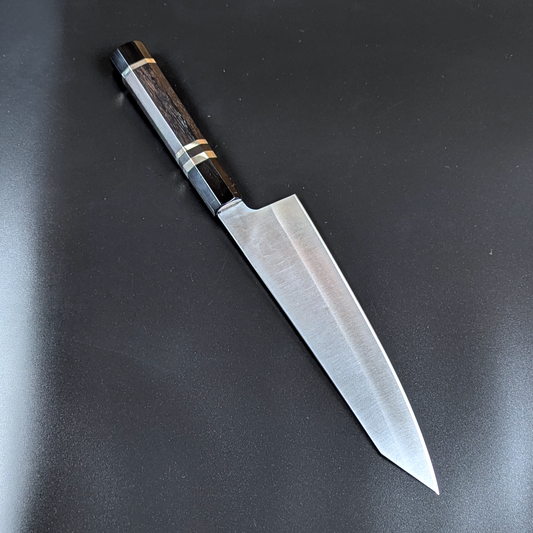 Agotado
Agotado -
Ginsan Mirror Kiritsuke Yanagiba 270mm Ebony Handle with Magnolia Saya
Precio habitual ¥55,000 JPYPrecio habitualPrecio unitario por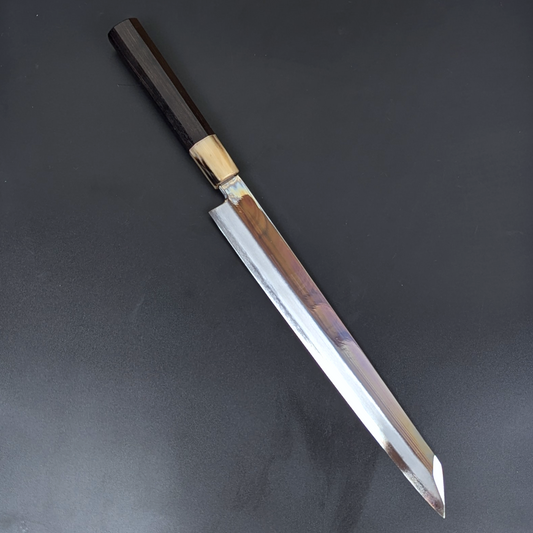
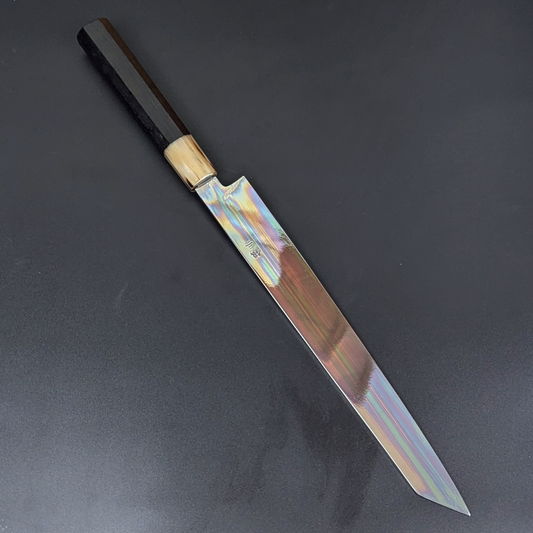 Agotado
Agotado -
Inoguchi Ginsan Wave Gyuto Black Plywood Handle
Precio habitual ¥6,200 JPYPrecio habitualPrecio unitario por¥6,600 JPYPrecio de venta ¥6,200 JPY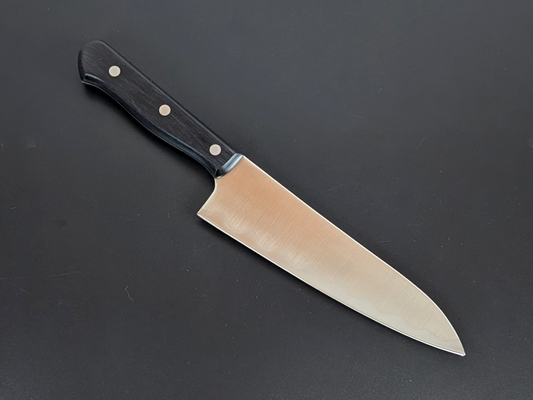
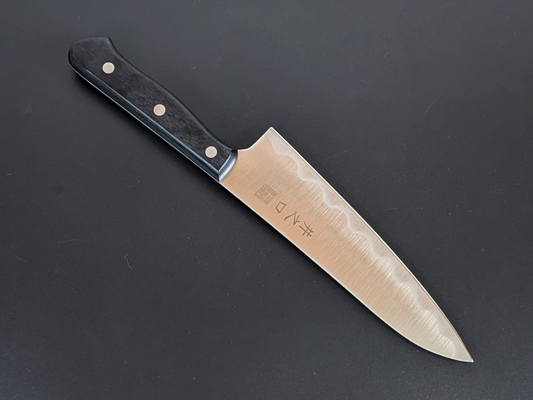 Agotado
Agotado
1. Composition of Ginsan Steel
Based on official specifications provided by Proterial, Ginsan steel contains the following chemical components:
Official Chemical Composition
| Element | Content (%) |
|---|---|
| Carbon (C) | 0.95 – 1.10 |
| Silicon (Si) | ≤ 0.35 |
| Manganese (Mn) | 0.60 – 1.00 |
| Phosphorus (P) | ≤ 0.030 |
| Sulfur (S) | ≤ 0.020 |
| Chromium (Cr) | 13.00 – 14.50 |
Differences in Composition with Similar Steels
Ginsan steel is part of a Japanese stainless steel family that includes Silver 5 (銀紙5号) and Silver 1 (銀紙1号). While all three are stainless, each is optimized for different performance needs.
Ginsan vs Silver 5:
Ginsan contains more carbon, providing greater hardness and sharper edge retention—closer in feel to carbon steel. Its HRC (Rockwell hardness) is typically 59 or higher.
Silver 5 is a more forgiving stainless steel, commonly used for razor blades, and is valued for its ease of processing and toughness. Depending on heat treatment, its hardness is either 50~ or 57~ HRC.
Ginsan vs Silver 1:
Silver 1 has less carbon but more chromium and added molybdenum, improving corrosion resistance. It's ideal for environments where rust resistance is essential, such as coastal kitchens or high-moisture settings. Its hardness is typically 57 HRC or higher
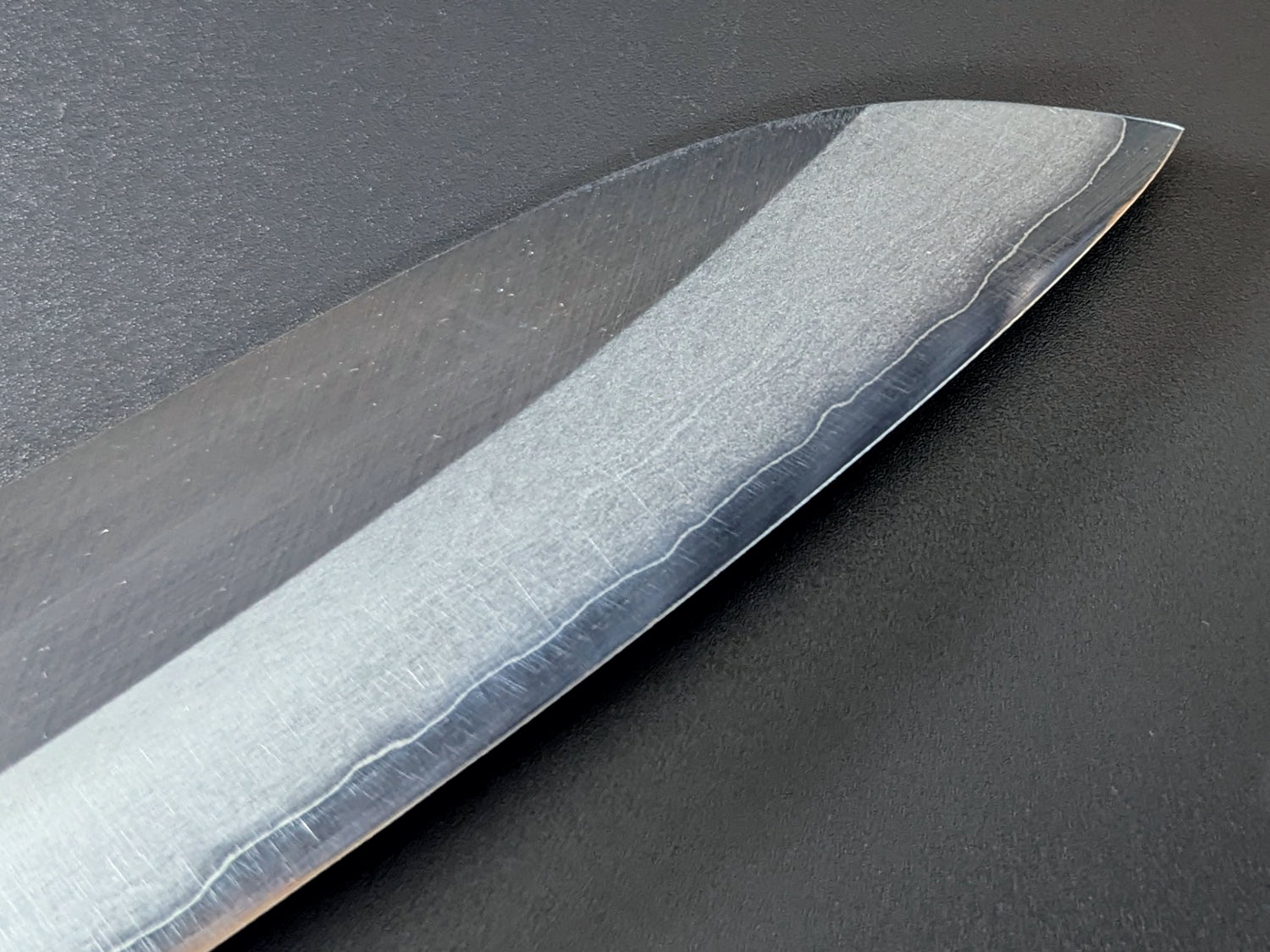
Cutting Edge of the Yamatsuka Ginsan Santoku
2. Ginsan vs Other Popular Steels
Ginsan is a high-carbon stainless steel often compared with other common knife steels. Below is a fact-based comparison focused on carbon content, hardness, and stainless properties.
Ginsan vs VG10
VG10: Carbon ~1.00%, HRC 60~, Stainless (Cr ~15%, includes Co and V)
→ Both are stainless steels with similar hardness, but VG10 contains cobalt and vanadium, giving it slightly better corrosion resistance and a more complex alloy composition.
Ginsan vs Aogami Super (Blue Super)
Aogami Super: Carbon 1.40~1.50%, HRC 60~, Not stainless (Cr 0.30~0.50&)
→ Aogami Super has higher carbon and hardness, but requires more care due to lack of corrosion resistance.
Ginsan vs SG2 (R2)
SG2 (R2): exact composition not officially disclosed, HRC 62~, Stainless
→ SG2 offers higher hardness and wear resistance but is more brittle and harder to sharpen than Ginsan.
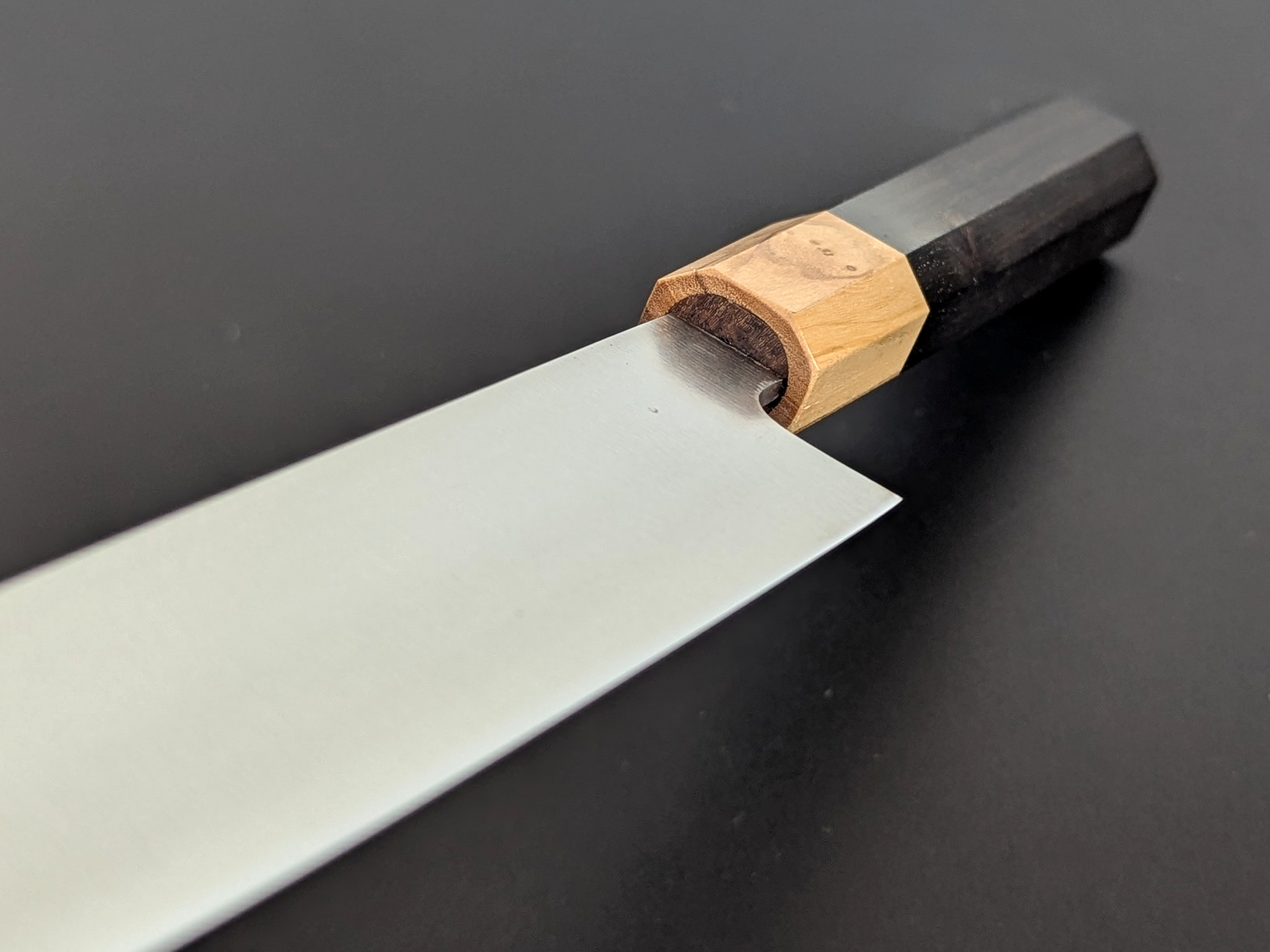
Blade-to-handle connection of Inoguchi Ginsan Yanagiba
3. Ginsan in the Community
Ginsan steel has earned a positive reputation among both professional chefs and knife enthusiasts for its balance of stainless properties and ease of maintenance. While not as widely discussed as VG10 or Aogami steels, it maintains a loyal following in Japanese cutlery circles.
🔍 Where It's Discussed
-
Reddit – r/chefknives
Discussions often highlight Ginsan’s stainless performance compared to high-carbon steels, and users appreciate its ease of sharpening.
Link Example: "Ginsan vs VG10 kitchen use" -
Japanese Knife Retailers and Blogs
Specialty stores such as Japanese Knife Imports and KnifeWear frequently describe Ginsan as a great choice for those who want the feel of carbon steel without the rust concerns. -
Knife Forums (e.g., BladeForums, KitchenKnifeForums)
Though less common than tactical steel discussions, mentions of Ginsan knives (especially gyuto and petty knives) praise their reliable cutting feel and low-maintenance nature.
✍️ Community Sentiment Summary
- Recognized as a "carbon-like stainless steel" by users due to its excellent edge performance.
- Valued by chefs who need daily-use knives that resist rust and still sharpen easily.
- Commonly associated with hand-forged Japanese knives from small workshops.
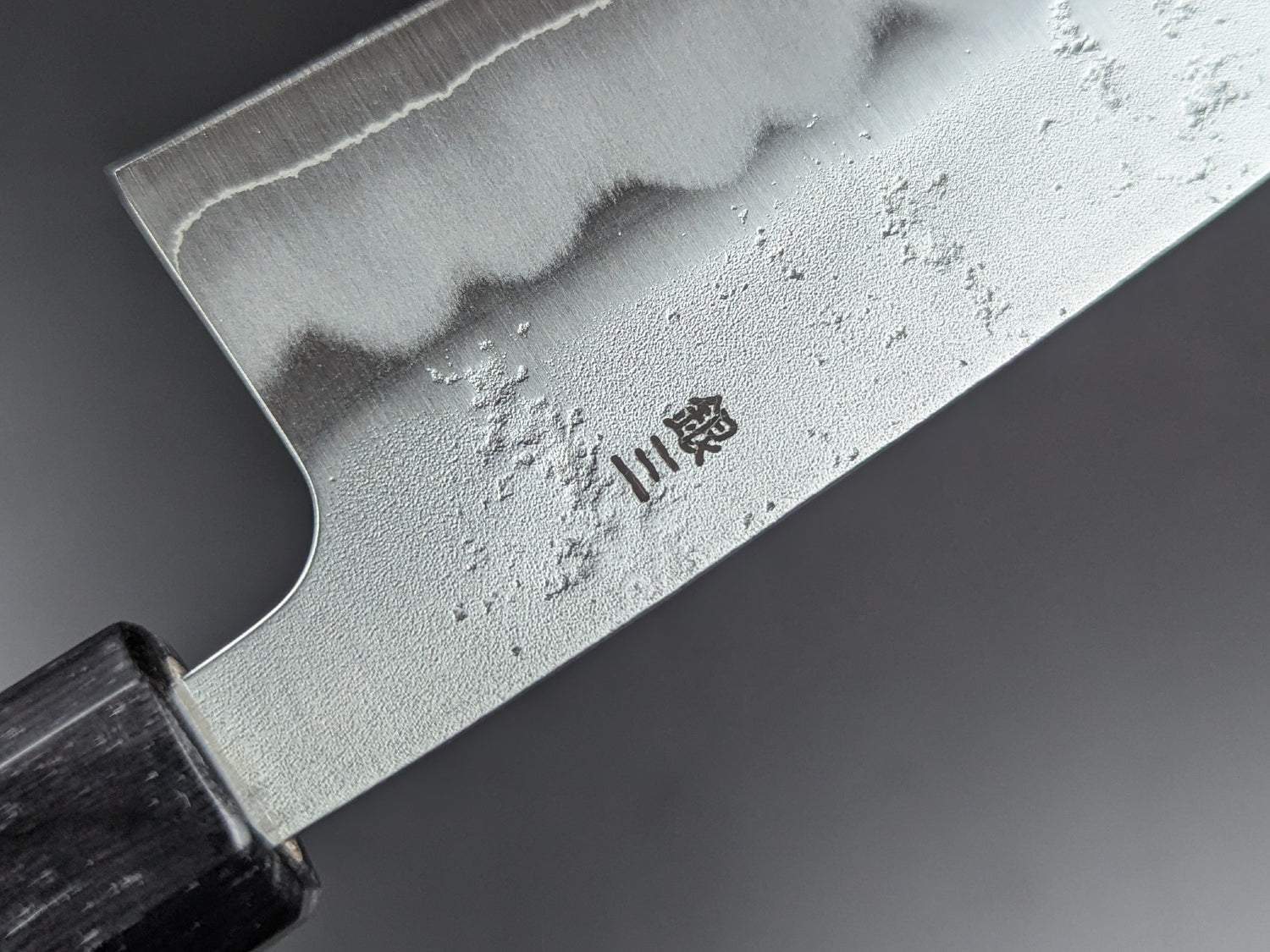
The engraving marked "Ginsan" of Yoshihiro Ginsan Santoku
4. Summary: Balanced Stainless Steel for Everyday Use
Ginsan steel offers an excellent balance of hardness, corrosion resistance, and ease of sharpening.
It is an ideal choice for those who want the cutting feel of carbon steel without the maintenance concerns.
Thanks to its stainless properties and consistent performance, Ginsan is widely trusted for kitchen knives made by Japanese craftsmen.
🔍FAQ
Q: Is Ginsan steel stainless?
A: Yes. Ginsan is a high-purity stainless steel with 13–14.5% chromium, offering strong corrosion resistance.
Q: What is the Rockwell hardness (HRC) of Ginsan steel?
A: It typically ranges from 59~ HRC, depending on the heat treatment.
Q: How does Ginsan compare to VG10?
A: Ginsan has a simpler composition and is easier to sharpen, while VG10 may offer slightly better corrosion resistance due to added elements like vanadium and cobalt.
Q: Is Ginsan better than carbon steel?
A: Ginsan provides similar sharpness and hardness to high-carbon steels but is easier to maintain thanks to its stainless properties.
Q: Is Ginsan steel good for kitchen knives?
A: Absolutely. It’s a favorite among Japanese blacksmiths for its clean cut, low maintenance, and excellent overall performance in the kitchen.

















